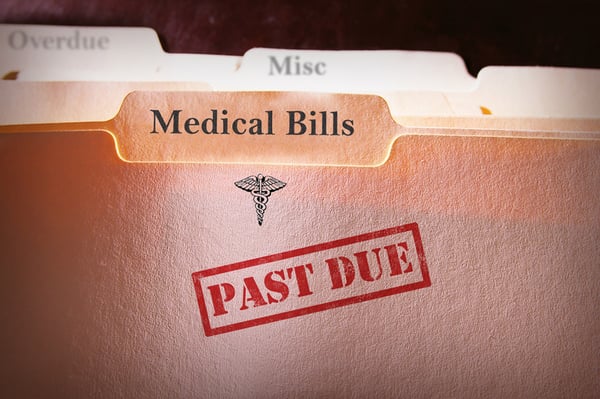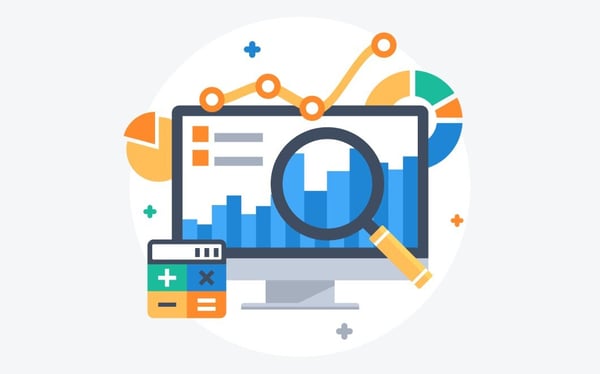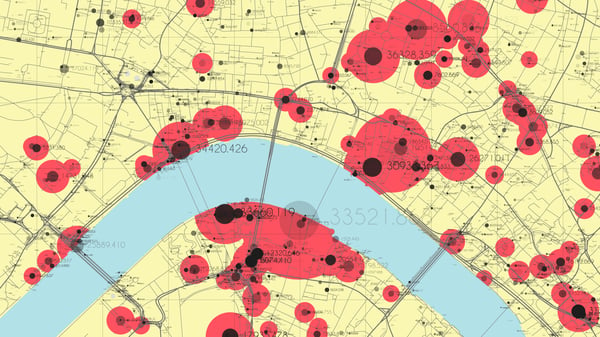4 Must-have Data Points for Dispatch-Billing Alignment and Maximum Reimbursement
Keys to Better EMS Billing Management
Tips for Improving Operational Efficiency and Cash Flow Today, we discuss the many small steps ambulance providers can take to improve operations and get paid for transports
Was this information valuable?

Tips for Improving Operational Efficiency and Cash Flow
Today, we discuss the many small steps ambulance providers can take to improve operations and get paid for transports. Actions taken in dispatch, in the field, and in billing will improve operating efficiency and have a positive impact on cash flow.
Key #1: Assign Dispatch Priorities
All providers need good dispatch protocols. This is important for emergency as well as non-emergency providers. Many ambulance companies use a public-safety answering point (PSAP) or a public 9-1-1 system. Other companies receive emergency calls directly.

The first step is that emergency dispatch priorities must be assigned in accordance with regulatory guidance. Dispatch has an impact on the level of emergency reimbursement received. Priority levels are only for emergency calls; they are tied to the patient’s reported symptoms/condition at the time of the call. The regulatory guidance is outlined here:
Section 30.1.1 – Ground Ambulance Services (Medicare Ambulance Benefits Policy Manual, Chapter 10)
(Rev. 130, Issued: 07-29-10, Effective: 01-01-11, Implementation: 01-03-11)
“The determination to respond emergently… must be in accord with the local 911 or equivalent service dispatch protocol. If the call came in directly to the ambulance provider/supplier, then the provider’s/supplier’s dispatch protocol must meet, at a minimum, the standards of the dispatch protocol of the local 911 or equivalent service. In areas that do not have a local 911 or equivalent service, then the protocol must meet, at a minimum, the standards of a dispatch protocol in another similar jurisdiction within the State or, if there is no similar jurisdiction within the State, then the standards of any other dispatch protocol within the State.”
Leveraging Dispatch Software
Providers need to take full advantage of their dispatch software/CAD system. The establishment of good dispatch priorities will enable the tracking of types of emergency calls received. It’s a win-win to be able to deploy the best staffing resources and obtain better billing results.
Taking Calls More Effectively
Non-emergencies mean facility involvement. Generally, patients have no control over who gets called. Facilities need patients moved, so they call the preferred provider. It’s good when a facility thinks well of a provider, but the provider could end up holding the bag for payment. There are state rules that may prohibit billing the patient, and certainly, the regulations governing Medicare- and Medicaid-managed care plans don’t allow patient billing for covered services. The transport would have been a covered service; it just needed to be performed by the contracted provider. What can you do? Answer the phone better.
- Train call intake staff to ask better questions (not more questions; the right questions).
I’ve spent a great deal of time in call centers. By and large, the caller is asked what they need and when. That approach allows the facility caller to dictate how service is rendered.
Instead, try asking what the patient needs help with, specifically why the patient’s condition requires an EMT (this will help you better understand the caller’s medical necessity needs and provide the best mode of transport). Ask for the name of the patient’s insurer, or, at the very least, request the patient’s Social Security number.
- Next, train call takers to know which insurers have a contract with your organization.
This is another way your dispatch software may be helpful. Configure information into the CAD system that notes contracted payers. If the call taker doesn’t get insurance information but does obtain a Social Security number, train the call taker to pre-verify insurance at the time of the call (it only takes a moment to check online).
If you are concerned about keeping the caller on the phone, have the scheduler check as soon as the call is complete. Otherwise, you may perform a transport for which you can never get paid.
Key #2: Provide Training for Field Operations
Billing departments often complain that documentation doesn’t meet their needs. They push back to operations, asking for more support for medical necessity and more documentation. We audit thousands of trip reports annually. What we see is that field providers document a great deal; the trouble is that documentation isn’t always what is needed for reimbursement purposes.
Ask the Right Questions
In many cases, less is more. Get the information needed by training field crews to ask themselves the same question that we recommend dispatch asks: what does the patient need help with? Why does the patient need an EMT at their side? If field providers document the answer to those two questions, they will provide the information needed for the billing department to make good billing decisions.

Conduct Annual Field Training
Field provider training needs to be done annually. I recommend staying away from admonishing crews that unless they document, the organization won’t get paid. Field providers don’t do what they do because they are interested in how the company is paid. Appeal to field providers’ interest in the patients. Good documentation is an essential part of patient care. That documentation protects the patient and the field provider from risk, creates a record of the patient’s condition, and, as a final step, is the tool needed for reimbursement.
Set Yearly Training Goals
Annual training goals remind EMTs and paramedics about forms and signature requirements, regulatory compliance, and narrative writing. Those narratives don’t have to be long; they just need to describe what the patient needs help with and what it is about the patient’s condition that requires a stretcher and an EMT. If you need ideas for goals to improve your ambulance billing efficiency, we’ve included some here.
Key #3: Help Billing Staff Focus on Clean Claims
Billing isn’t the red-headed stepchild of an ambulance company. Billing is essential to cash flow and organizational compliance. This means that billers also need training and support.
Schedule Regular Trainings
Arrange training from the software vendor and clearinghouse routinely. Software updates and clearinghouses expand services. Billers need to understand the best (and latest) approach to operate their tools.
Run Reports Routinely
Management often worries about follow-up. Accounts receivable (A/R) management is critical to good cash flow management. Run A/R aging reports routinely (weekly or monthly). Assign staff to go through the aging. My recommendation is to never work on the oldest accounts first. Always work on the youngest accounts, as young money is easier to obtain. Pursue unpaid accounts that are 45 to 60 days old.
Pursue Time-Sensitive Accounts
Watch the clock and calendar. Pursue accounts that have a timely filing limit. Remember, the initial time to submit a claim is longer than the time allowed to appeal or follow-up. Leave Medicare for last as the timeline is longer to pursue some of those unpaid claims.
Send Old, Unpaid Self-Pay Patients to Collections
As to patient-pay accounts, let my people go! Most billing departments don’t have the staff to call patients at night or on weekends when the patient is more likely to be available. Instead, monitor your billing software and send statements in a timely manner (at the date of service, then 15 days later, 30 days, and finally at 45 days).
If the self-pay account wasn’t paid in 45 or 60 days, there is a reason. Send the account to a collection agency for final pursuit. Keep the limited resources of billing staff focused on getting clean claims out the door and pursuing denials. Click here to read more on improving your billing management.

There isn’t one single step that will improve operational efficiency; it’s a collection of many smaller steps that lead to better production. Good luck with your efforts.
Discover More Opportunities to Improve Your Operational Efficiency
Your agency’s opportunities for operational improvement are unlimited. Find other ways you can enhance your efficiency and cash flow by visiting our resource page.
Related Posts
Podcast: 4 Ways ePCR Software Can Relieve EMS’ Biggest Headaches
How EMS Agencies Can Reframe Need and Refocus Resources With Geospatial Analytics
ZOLL Pulse Blog
Subscribe to our blog and receive quality content that makes your job as an EMS & fire, hospital, or AR professional easier.
ZOLL Pulse Blog
Subscribe to our blog and receive quality content that makes your job as an EMS, fire, hospital, or AR professional easier.





